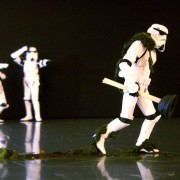6 Signs Your Onboarding Process Needs Improvement
How’s your employee onboarding process? Many companies are eager for their new hires to be off and running in their new roles. After all, that empty chair costs the company money in terms of lost productivity and hiring costs. It takes, on average, 42 days to find a new employee. And hiring a new employee costs $4,000, on average.
But if you think the work of hiring new employees ends with their first day, you’re missing an opportunity to improve every aspect of your business. Onboarding new employees effectively improves employee engagement, increases the new hire’s productivity, and contributes to a positive company culture that creates a cohesive team.
Revamping your onboarding process can solve a surprising number of seemingly unrelated problems. This article touches upon 6 signs your onboarding process needs improvement.
Your New Hire Time-to-Productivity Exceeds Six Months
One survey found that new hires take a year or longer to be fully productive at 30% of companies. And while those companies wait for new hire’s to become productive, their colleagues get overburdened with filling in the productivity gaps.
In reality, a comprehensive onboarding process can bring most new hire’s up to speed within three months, or six months for mid-level positions. Creating an onboarding process checklist that includes training modules and digital access to important documents will help new hires learn vital information independently.
You’ll always know how far new hire’s have progressed in their training. And coworkers won’t be saddled with training the basics in addition to their own responsibilities.
You See New Hires Leaving Before Their First-Year Anniversary
If you’re losing a significant number of new hires before their first-year anniversary, you need a better onboarding process.
The Work Institute’s 2020 Retention Report found that nearly 40% of new hire’s left the company within their first year. Of those, 2 out of 3 leave within the first six months. The reasons these new hires leave vary, but include work environment, well-being, career development and other reasons that can be avoided with a thoughtful onboarding process.
A welcoming onboarding process that takes into account the new hire’s needs and career goals will help stem the tide of exiting employees. Include items on your onboarding checklist that insert the new hire into your company’s fabric. Make one of those items a goal-setting session, where the new hire can express their professional aspirations and explore ways your company can support them. After setting meaningful goals, there should be a mutually agreed upon plan to check in at regular intervals. In this way, the new hire can see how the company is invested in their development.
Your Employee Engagement Survey Reveals Unhappy Workers
Having an engaged workforce improves several business outcomes, including customer ratings, product quality and safety measures. Overall, engagement makes your company more profitable.
Engagement is almost always connected with an employer meeting a new hire’s expectations. Your employee onboarding process, along with your hiring process, is critical to setting expectations for new hires. And so it’s not only important to provide a welcoming, fun, and comfortable experience, it’s important provide the new hire with honest, realistic expectations of what success looks like in their role.
When you create an onboarding checklist and training schedule tailored to each position, you help new hires know exactly what is expected of them. Additionally, things like making sure that new hires have all their equipment on day one, or asking for their feedback on their onboarding experience, will set the stage for a highly engaged, long-term employee.
Need more proof of how employee onboarding impacts employee engagement? Gallup developed a survey with 12 “yes” or “no” questions to measure engagement. All 12 areas of engagement could be directly linked to onboarding and the new hire’s early employment experience.
New Hires Quit, Citing Poor Company Culture
Company culture is another one of those employee experience items that have a big impact on your company’s success. According to this article in MIT Sloan Management Review, employees leaving during the Great Resignation cite a toxic culture as the most common reason.
In today’s job market, new hires will judge company culture fairly quickly and leave if they are unsatisfied–there’s no sense wasting time working for an organization where they feel unappreciated, used, or uncomfortable. The employer will only receive the benefit of the doubt for a short time.
The elements of a toxic culture vary, but they are easily sniffed out early–during the onboarding process. Employees may feel that management is disrespectful. Or they may witness unethical behavior. Essentially, anything that has a negative impact on your employee’s onboarding experience will be seen as proof of a poor company culture.
So onboarding is a golden opportunity to take the reins and steer your new hires and your company culture in a positive direction. Use your onboarding checklist to introduce your company’s mission and values to your new hire. Educate your new employee on your company’s history. And tie your new hire’s role the company’s larger purpose.
You Play Moderator Too Often When Employees Don’t Get Along
Constantly bickering employees are the result of a poor company culture. The whole team suffers when employees don’t get along. The negative energy impacts everyone, engagement plummets, and the drama can escalate to sabotage that hurts a company’s bottom line.
Onboarding employees effectively means introducing employees to their colleagues as well as the company. You can set the foundation for friendly and respectful relationships during the onboarding process. Without a formalized, purposeful onboarding process–one that supports a clearly defined company culture–employees are left to create their own culture, which is a lost opportunity to build trust and respect of leadership.
So it’s critical to effectively introduce a new hire to all areas–and all people–of a company. For example, part of your onboarding process could include sending new hires to work one day in each department. Doing so will help prevent the creation of silos that often lead to misunderstandings, which in turn can develop into organizational disfunction.
Gallup’s research shows that having a best friend at work increases productivity and reduces turnover. So it’s wise to use the onboarding process to help your new hires develop friendships. Doing so will not only increase your team’s harmony, but also improve retention.
You can jumpstart your hire’s new friendships by adding a few simple steps to the onboarding checklist. Assign a workplace buddy to help the new hire acclimate to the unspoken rules of the office. Have the new hire fill out a questionnaire or write a short bio to post on the company’s intranet. Host a monthly lunch to bring new hire’s together.
You Worry About HR Compliance and Risk Management
A regulatory fine costs businesses an average of about $30,000. Much of a company’s regulatory burden is HR related. Failing to maintain employee documentation or thoroughly track hiring decisions can land your company in hot water with a government agency.
Poor record-keeping can also leave you vulnerable to a lawsuit. If an applicant files a discrimination lawsuit, are you confident you’ll be able to find all the documentation surrounding your hiring decision? If your onboarding process checklist doesn’t include important safety trainings, you could be liable for significant damages if an employee injures himself.
Your risks are far greater if your onboarding process doesn’t include digitized paperwork with varying degrees of password protected security. And if the risks of sloppy organization of HR-related paperwork isn’t keeping you up at night, it should.
How to Improve Employee Onboarding
A comprehensive employee onboarding checklist that considers the employee’s needs as well as the company’s will solve a host of HR related issues. Start by analyzing various company-wide problems that develop among employees and teams. Issues such as low engagement and poor workplace culture contribute to poor retention and stunted profits.
Studies show time and time again that creating a workplace culture that contributes to your employees’ overall well-being will improve your company’s success. Higher retention, fewer safety-related incidents, better product quality, and improved innovation are the byproducts of happy employees.
Your onboarding efforts set the stage for your employees’ engagement. The more effort you put into your new hire’s development during that crucial first year, the less you’ll ultimately spend on your hiring efforts.
Take your onboarding to the next level with onboarding software. Doing so, you’ll automate much of the tedious record-keeping associated with hiring. The checklists, training modules and role assignments will keep your onboarding process on track. Most importantly, you’ll free up your time for implementing creative onboarding ideas.
Are you ready to take your onboarding process to the next level? Contact ExactHire today.
Photo by Nick Fewings on Unsplash








